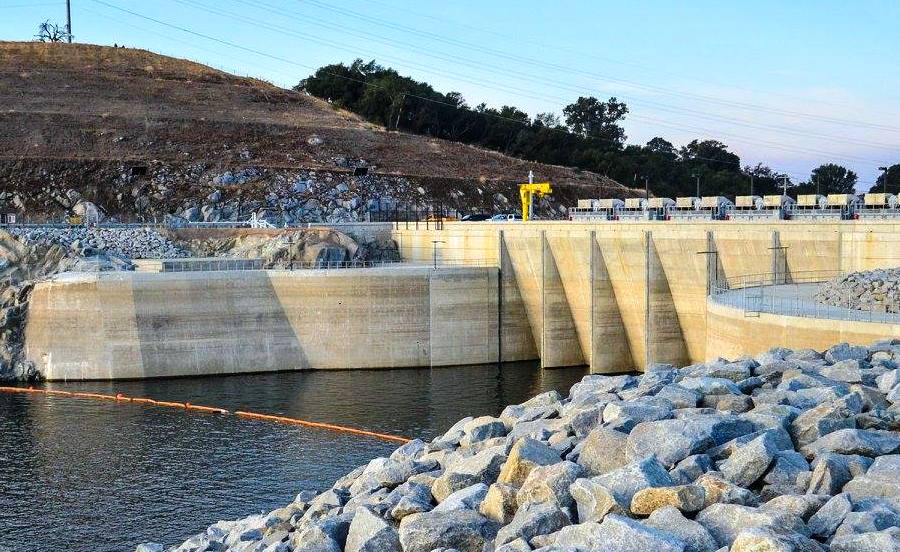The U.S. Army Corps of Engineers Sacramento District and U.S. Bureau of Reclamation on October 17 celebrated the completion of the new Folsom Dam Auxiliary Spillway. This marks the culmination of nearly a decade of work, beginning with excavation by the Bureau of Reclamation in 2008.
The roughly $900-million spillway project is a cooperative effort between the U.S. Army Corps of Engineers and the U.S. Department of the Interior, Bureau of Reclamation. Officials say it was designed to help the Sacramento region achieve a "200-year level of protection, meaning there will be a one-in-200 chance for flooding in any given year."
The project was built in four phases, with the Bureau of Reclamation completing most of the excavation for the spillway chute in the first two phases. In May 2012, Granite Construction Co. of Watsonville, Calif., began construction on the project’s third phase, which was the spillway’s control structure and gates.
In 2013, Kiewit Infrastructure West Co. was hired on a $255.1-million contract to complete the fourth and final phase, which included construction of a 3,027-ft-long spillway chute and stilling basin, as well as the 1,100-ft-long approach channel that connects the new spillway to the reservoir.
The new auxiliary spillway was built to complement the functions of the main Folsom Dam. It will allow water to be released earlier and more safely from Folsom Lake during a high water event.
The spillway includes a 1,100-ft-long approach channel that funnels water from the lake into the spillway; a control structure with six submerged gates that are controlled in coordination with the gates on the main dam to control water releases; a 3,027-ft-long spillway chute that transports the water from the control structure to the American River below; and a stilling basin that slows the racing water back to normal flow levels that the river channel will be able to withstand.
The entire spillway structure operates in conjunction with the existing operations of the Folsom Dam and is not intended to replace any of the dam’s current functions or increase the height of the reservoir.
James Roberts, president and CEO of Granite Construction, said at the completion ceremony that sustainability was a important on this job. "This project had a strict, zero storm water discharge requirement which I'm proud to say we met," said Robert. "All storm and construction water was captured and treated at an off-site facility and then repurposed. Rock excavated from the chute was reprocessed into aggregate and used to reface in the (nearby) Mormon Island Auxiliary Dam."
Over the course of construction, there was 324,000 yards of dirt excavated; 125,000 cu-yds of concrete consumed; and six sets of massive steel gates with a combined weight of more than 5 million pounds installed.
The Bureau of Reclamation has responsibility for dam safety as well as operation and maintenance of the Folsom Dam facility, while the Corps of Engineers is responsible for flood damage reduction. By combining their efforts into a single project, the two Federal agencies say they were able to complete the project faster and at a lower cost.


Post a comment to this article
Report Abusive Comment